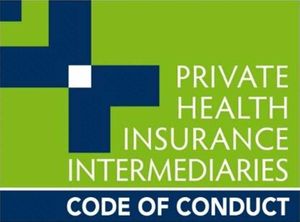What is family private health insurance?
Family health insurance provides coverage for all members of your family under a single policy, including parents and dependent children. The extent of coverage depends on the policy, helping to cover various medical expenses and treatments outside of Australia’s public health system, Medicare.
While family health cover is similar to singles or couples health insurance, it’s specifically designed to meet the needs of families, offering benefits that cater to both adults and children.
Around half of all Hospital policies are family policies, according to the most recent health insurance statistics in Australia. We recently surveyed more than 1,000 people and 31% of respondents said they were on a family health insurance policy.
What does family health insurance cover?
Family health insurance comes in three types: Hospital-only, Extras-only, or combined Hospital and Extras cover. For family health cover, all members included on the policy will have the same type of coverage – you can’t mix and match different options for each person.
Hospital cover for families
Covers all family members for costs related to being treated as private patients in both public and private hospitals. For example, it can help cover expenses for surgery, including medical costs, as well as related costs like accommodation, transport and meals during a hospital stay.
Families can choose the level of Hospital cover that suits their needs (Basic, Bronze, Silver or Gold), with varying inclusions and coverage levels depending on the plan selected. With a family hospital policy, all family members will be covered under the same level of cover.
If you want coverage for common childhood procedures, such as tonsils, adenoids and grommets, you’ll need to select an appropriate level of hospital cover, usually from the Bronze level and higher. A two-month waiting period typically applies for tonsillectomy or adenoidectomy procedures, or 12 months for pre-existing conditions.
Extras cover for families
Provides coverage for various out-of-hospital treatments and expenses, such as dental, optical, physiotherapy, and more. Similar to Hospital cover, the inclusions and limits depend on the level of Extras cover you choose.
However, the coverage under Extras policies isn’t as clearly defined as Hospital cover, so it’s important to review what is specifically covered and the limits for each service when comparing policies for your family.
Under family health insurance, all members will generally be covered by the same level of Extras cover. You can’t choose different inclusions for each family member — everyone will share the same benefits. If you want tailored coverage for different family members, you would need to take out separate policies.
Depending on the policy, claim limits for Extras cover may apply per person or as a total limit for the whole family (i.e. annual limit of $750 for general dental). It’s important to check this before signing up to ensure you get the best value from your policy.
When to consider family health insurance
There are several key moments in life when family health insurance becomes particularly important. Here are some of the more common triggers:
You’re starting a family
When you’re planning to have children or are expecting, family health insurance can provide coverage for pregnancy and childbirth. However, these benefits are typically only available with higher levels of cover. It’s also important to note that there’s usually a 12-month waiting period before you can make a claim for pregnancy and childbirth-related expenses.
You’re growing your family
As your family grows, a family health insurance plan allows you to cover everyone under one policy, making it easier to manage. It’s also a time when children begin needing regular dental checkups, and having Extras cover can help with these costs.
Your kids are teenagers or young adults
As your children reach their teenage or early adult years, family health insurance can continue to cover their medical needs until they reach the typical age limit of 21, or 31 if they’re still studying (subject to terms and conditions). During this time, there may be an increased need for optical, chiropractic, and orthodontic services.

Chris Whitelaw, General Manager - Health Insurance at Money.com.au
"Some children can stay on their parents' family policy until they turn 31, as long as they meet certain conditions, such as studying full-time and not being married or in a de facto relationship. If multiple children qualify, this can significantly reduce costs since you only pay for one family policy instead of individual singles coverage for each child. Just be sure to ask your children to contribute their share of the premium."
Chris Whitelaw, General Manager - Health Insurance at Money.com.au
Pros and cons of health insurance for families
Pros
- You may be eligible for a higher government rebate with a family policy, depending on the ages and income of both spouses
- All family members are covered under one policy, so there’s no need to manage multiple policies for each family member
- You can normally add children on the policy as they are born, meaning they’re covered from birth up to a certain age
Cons
- Though they offer a number of benefits, family health insurance policies can come with a hefty price tag, making them out of reach for some families
- All family members are usually required to have the same level of cover, which means you can’t customise the policy to suit each individual’s specific needs
- Children are typically only covered under a family policy until they reach a certain age, usually 21, or up to 31 if they are studying and meet specific criteria
How much does family health cover cost?
The cost of family health insurance ranges from $174–$541 per month for hospital cover and around $124 per month for extras cover.
But it'll depend on several factors, including the level of cover you choose, the ages of the family members, and the provider you select. Your income can also influence the premiums you pay, as there are rebates on offer based on how much you and your spouse earn in a year.
Family premiums can be expensive, but incentives like the Private Health Insurance Rebate can help lower the cost for eligible families.
To give you an idea of potential costs, here’s an example based on quotes from some of Australia’s largest health funds. This example compares the cost of family health insurance for a couple (both aged 35) with two dependent children under 21 living in NSW, with a combined income under $202,000.
The cover includes each provider’s most basic level of hospital cover and a medium level of Extras, covering services like emergency ambulance, general and major dental, optical, and physiotherapy. Keep in mind that the final premium can vary based on the specific level of cover, the insurer, and your location.
The latest report from the Private Health Insurance Intermediaries Association (PHIIA) found that the average gross annual premium (GAP) for combined Hospital and Extras family policies sold by its members rose by 1.7% over the past year to $4,890 (around $408 per month).
Family health insurance cost comparison
Provider | Bupa |
|---|---|
Basic Hospital (per month) | $162.78 (Basic Accident Only Hospital) |
Extras (per month) | $75.45 (Freedom 60 Extras) |
Combined Hospital and Extras (per month) | $238.23 (Basic Accident Only Hospital & Freedom 60 Extras) |
Provider | HCF |
Basic Hospital (per month) | $165.50 (Hospital Basic Plus) |
Extras (per month) | $73.31 (Mid Extras) |
Combined Hospital and Extras (per month) | $238.81 (Hospital Basic Plus & Mid Extras) |
Provider | HBF |
Basic Hospital (per month) | $169.72 (Basic Hospital Plus) |
Extras (per month) | $76.77 (Flex 50) |
Combined Hospital and Extras (per month) | $246.49 (Basic Hospital Plus & Flex 50) |
Provider | nib |
Basic Hospital (per month) | $178.76 (Basic Care Hospital Plus) |
Extras (per month) | $79.64 (Core Extras) |
Combined Hospital and Extras (per month) | $258.40 (Basic Accident Hospital & Core Extras) |
Provider | GMHBA |
Basic Hospital (per month) | $166.85 (Accident Only Hospital Basic) |
Extras (per month) | $91.75 (Mid Extras Set Benefits) |
Combined Hospital and Extras (per month) | $258.65 (Accident Only Hospital Basics & Mid Extras Set Benefits) |
Provider | Medibank |
Basic Hospital (per month) | $186.25 (Medibank Bronze Plus Value) |
Extras (per month) | $99.79 (Growing Family Extras Only) |
Combined Hospital and Extras (per month) | $286.04 (Medibank Bronze Plus Growing Family Extras) |
Provider | Australian Unity |
Basic Hospital (per month) | $201.54 (Core Hospital Bronze Plus) |
Extras (per month) | $87.40 (Focus Extras) |
Combined Hospital and Extras (per month) | $288.94 (Core Hospital Bronze Plus & Focus Extras) |
| Provider | Basic Hospital (per month) | Extras (per month) | Combined Hospital and Extras (per month) |
|---|---|---|---|
Bupa | $162.78 (Basic Accident Only Hospital) | $75.45 (Freedom 60 Extras) | $238.23 (Basic Accident Only Hospital & Freedom 60 Extras) |
HCF | $165.50 (Hospital Basic Plus) | $73.31 (Mid Extras) | $238.81 (Hospital Basic Plus & Mid Extras) |
HBF | $169.72 (Basic Hospital Plus) | $76.77 (Flex 50) | $246.49 (Basic Hospital Plus & Flex 50) |
nib | $178.76 (Basic Care Hospital Plus) | $79.64 (Core Extras) | $258.40 (Basic Accident Hospital & Core Extras) |
GMHBA | $166.85 (Accident Only Hospital Basic) | $91.75 (Mid Extras Set Benefits) | $258.65 (Accident Only Hospital Basics & Mid Extras Set Benefits) |
Medibank | $186.25 (Medibank Bronze Plus Value) | $99.79 (Growing Family Extras Only) | $286.04 (Medibank Bronze Plus Growing Family Extras) |
Australian Unity | $201.54 (Core Hospital Bronze Plus) | $87.40 (Focus Extras) | $288.94 (Core Hospital Bronze Plus & Focus Extras) |
Other factors that may impact the cost of family health insurance
Lifetime Health Cover loading for family Hospital cover
Depending on your age, either or both of you (and your children, if applicable) may be subject to the Lifetime Health Cover (LHC) loading, which is an additional cost on top of standard premiums. The LHC loading applies to individuals over 31 who have never had private health insurance, and it increases the longer you go without it. For couples and families, the loading is calculated based on the average of the loading for each person.
For example, let's say one partner is 35 years old and has never had private health insurance, while the other partner, also 35, has had cover since their 20s. In this case, the LHC loading applied to their family health insurance would be the average of their individual loadings: 10% (for the partner without previous cover) + 0% (for the partner with continuous cover) / 2 = 5% premium loading.
Government rebate for families
The government provides a rebate on health insurance premiums to help reduce costs, with the rebate amount based on your household income (up to an income cap). For couples and families (including single-parent families), the rebate is determined by your combined household income, with lower-income households qualifying for higher rebate levels.
The rebate amount is also influenced by the age of the oldest person on the policy. For example, if the oldest partner in the couple is over a certain age, the rebate might be slightly higher to help offset the additional costs associated with older policyholders. This is particularly the case for seniors aged 65 and over.
| Family income | Rebate % |
|---|---|
$202,000 or less | 24.288% for under 65s 28.337% for ages 65-69 32.385% for ages 70+ |
$202,001 – $236,000 | 16.192% for under 65s 20.240% for ages 65-69 24.288% for ages 70+ |
$236,001 – $316,000 | 8.095% for under 65s 12.143% for ages 65-69 16.192% for ages 70+ |
Age-based discount for families
If either or both partners are under 30 years old when you take out cover, you may qualify for an age-based discount on your family health insurance. This discount is offered by some insurers (though not all) and is applied as a percentage reduction on your policy premiums.
The discount is typically 2% for every year you are under 30 at the time you sign up for cover. For example, if one partner is 26 years old (8%) and the other is 28 (4%), the discount applied would be 6% (average of each partner’s discounts). The discount remains in place until you turn 41, after which it gradually phases out.
| Person's age when they took out hospital cover | Discount that your insurer may offer |
|---|---|
18-25 | 10% |
26 | 8% |
27 | 6% |
28 | 4% |
29 | 2% |
30 | 0% |
Medicare levy surcharge for families
This is not a direct cost of your family health insurance, but rather a cost you might incur if you don’t have a minimum level of hospital cover.
For families, the Medicare levy surcharge (MLS) is applied based on your combined household income, with thresholds for the 2025/26 financial year outlined below. It's important to note that the family income threshold is increased by $1,500 for each dependent child after the first child.
If your household income exceeds the applicable threshold and you don’t have the required level of hospital cover, the MLS will be applied as an additional charge on your tax bill. This is designed to encourage families to take out private health insurance and reduce the burden on the public healthcare system.
| Family income threshold | Medicare levy surcharge |
|---|---|
$202,000 or less | 0% |
$202,001 – $236,000 | 1% |
$236,001 – $316,000 | 1.25% |
$316,001 or more | 1.5% |
The excess you choose on Hospital cover
Some health insurance providers allow you to nominate a higher excess on family hospital cover to help reduce your premiums. The maximum excess for family policies is typically $1,500 per membership year. While increasing your excess can lower your premiums, it’s important to keep in mind that this means you’ll need to pay a higher amount out-of-pocket if you need to make a claim.
We recently asked Australians whether they have adult children (aged 21 or older) included on their private health insurance policy – and if so, who pays for it.
While most respondents said they don’t have adult children on their policy, 17.9% said they do and cover the full cost themselves. Another 11.3% said the cost is shared, while 8.3% noted their adult children pay the full additional amount.
How to choose the best family health insurance policy
What level of cover best suits your family?
You’ll notice that most insurers offer different levels of cover, such as basic, mid-range or top. While a basic policy will cover the essentials, it’s worth considering what inclusions are important to you and your family, as well as the benefit limits when it’s time to make a claim.
Are you planning on having more children?
If you’re planning to expand your family, consider whether you want the policy to include pregnancy and childbirth coverage. Some comprehensive policies might offer this as standard, while others may require it to be added as an extra. Keep in mind there’s a 12-month waiting period that generally applies.
Cost of premiums and annual increases
Premiums can vary significantly depending on the level of coverage you choose. Be mindful that the cost of premiums usually rise on 1 April every year due to inflation or changes in healthcare costs. Ensure that you compare health insurance and select a policy that fits your budget, not just now but in the future.
Are the claim limits enough for your family?
Some policies have claim limits that apply per person, while others may have an overall annual limit for the whole family. It’s important to understand these limits to avoid unexpected out-of-pocket expenses, especially if your family has frequent medical needs or requires more extensive treatments.
Are there any special offers available?
Look out for any health insurance offers or discounts that could reduce your premiums. Some insurers offer discounts for bundling health insurance with other policies, such as car or home insurance, or for being a long-term customer. Additionally, check for any seasonal promotions that might apply to your family.
What are the waiting periods like?
Be sure to check for any waiting periods, particularly for things like pregnancy, maternity, and pre-existing conditions. Policies may have different waiting periods for various treatments, while some insurers may offer no waiting periods on certain benefits. Also, review any exclusions in the policy to ensure that your family's specific healthcare needs are covered.



